Greg Osby cut a figure out of time, balancing past and future on the bell of his alto saxophone, during a rare concert one evening this fall. To celebrate the release of his new album, Minimalism, he’d set up shop at the IDEA Center for the Arts, a gallery and community space in downtown Camden, N.J., with the younger members of his quartet.
After stamping a crisp punctuation mark at the end of the title track — a tune with a Wayne Shorterish harmonic drift, a muted synth sheen, and a pulsating 7/8 meter — Osby cracked an almost imperceptible smile. “Alright,” he said. “That went… better than expected.” This line met with knowing laughter in the amiably jam-packed room; as he had explained before counting off the song, this was the band’s first time playing it live.

Next came a misterioso waltz titled “Thank You For Your Time,” dedicated to the late Andrew Hill. Osby’s bladelike alto was smartly framed by his rhythm team: bassist Nimrod Speaks, drummer Fabio Rojas, and keyboardist Tal Cohen, whose solo was a deftly surging affair nodding toward the song’s inspiration. The sound of Osby’s last note, held without vibrato over three long bars, was as bracingly clear as afternoon sunlight slanted through a gimlet glass.
Later in the set, Osby acknowledged the special circumstances of the evening. “It’s kind of a reemergence of sorts,” he explained, alluding to the fact that Minimalism is his first studio album as a leader in 15 years. “I fell into a compositional rut, I felt like I was repeating myself,” he said. “Also, the industry changed.”
All these factors contributed to a period of relative quiet for Osby, who turned 63 this year. There were other factors as well, which I considered as his band dug into “Truth,” a composition from his previous studio release, the 2008 album 9 Levels. That tune combines a dartlike chromatic melody with an undercarriage of fractured funk, though its harmonic foundation is the blues. Its formal intricacies prompted a reconsideration of the title — something about how truth can be knowable but prismatic, riven with complications.
Osby lives on a tree-lined street in Cinnaminson, NJ, not far from the Tacony-Palmyra Bridge. The day after his concert, I dropped by to talk about his reemergence, his new music, and his generational view on a changing scene.

His home gives a neat suburban impression with tasteful modern touches; skylights filled the space with natural light. One large, north-facing room serves as Osby’s studio, office and storage unit, and it was there that we settled in.
An electric piano sat near his computer desk, with sheet music on a stand: the alto sax lead sheet to “Thank You For Your Time,” whose title had been scrawled in pencil. (The original working title was printed on the score: “Mr. Hill.”) The margins of the room were stacked with bins and banker’s boxes — a personal archive, chronicling many years of informal study with Osby’s late elders, like Hill, saxophonist Joe Henderson and guitarist Jim Hall.
“I take it upon myself to be a natural bridge between generations,” Osby explained. “Because I had the benefit of breaking bread and spending a great amount of time with some of these cherished figures, either through actual performance and playing, or just buying them a glass of wine and pulling all-nighters and grilling them. In these boxes that you see, there are cassettes and videotapes of some of those unedited exchanges. I have a storage space full of stuff, too.”
Osby began his career in the early 1980s, after transferring from Howard University to the Berklee College of Music. At Berklee, he was part of a student cohort that included trumpeter Wallace Roney, his fellow saxophonist Donald Harrison, Jr., and drummer Terri Lyne Carrington. “We were both in Phil Wilson’s Thursday Night Dues Band, which is now the Rainbow Band,” Carrington recalls. “He also had a gig at Wally’s. We became fast friends.”
Carrington, a 2021 NEA Jazz Master, is almost exactly five years younger than Osby. (Their birthdays fall one day apart.) When he moved to New York in 1982, one of his first major gigs as a sideman was with master drummer Jack DeJohnette, on Carrington’s recommendation. She hit New York herself the following year, moving into Osby’s Brooklyn apartment — an arrangement that reassured her parents, who considered him family.
“Because we were roommates, he dealt with a lot of my trials and tribulations,” Carrington says. “No women were playing drums on the scene then. And he would defend me in certain situations when people would talk s–t, especially when I wasn’t there. So I definitely felt like he had my back. He was somebody I would confide in.”
Carrington appears on Greg Osby and Sound Theatre, his first album, released on JMT in 1987. (Two years later he played on Real Life Story, her Verve Forecast debut.) Over the next dozen years, as Carrington made her name with Wayne Shorter, Dianne Reeves and others, Osby solidified his stature as a modernist of oblique instinct and brisk execution. He made an acclaimed series of albums for Blue Note Records throughout the ‘90s, including 3-D Lifestyles, an early hip-hop experiment that Osby revisited in a recent conversation with WRTI’s J. Michael Harrison, and Art Forum, named one of the albums of the year.
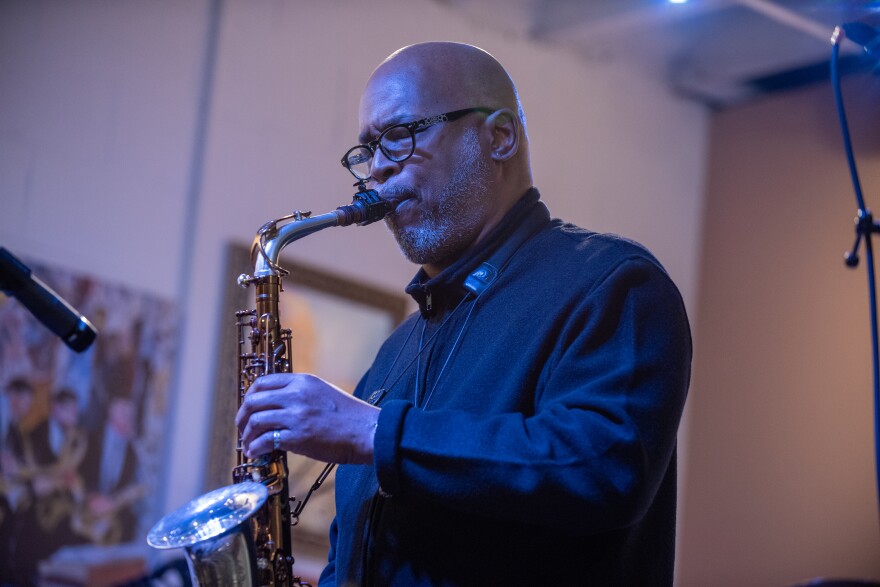
Greg Osby, right, with WRTI’s J. Michael Harrison at Vinyl Revival in Lansdowne, PA, on Dec. 2, 2023.
Along the way, Osby became a bandleader of exceptional depth and command. “His live sets are among the most rewarding experiences in jazz clubs at the moment,” wrote Ben Ratliff in a Times profile in 1998, the year Blue Note released Banned in New York. That album, made with a minidisc recorder placed on a table at Sweet Basil, was unorthodox for a major-label release; in order to get it out only months after promoting a studio album, Osby persuaded Blue Note to drop it guerilla-style, at a bargain price.
His band on the album featured Jason Moran on piano, Atsushi Osada on bass, and an 18-year-old Rodney Green on drums. Racing through a set of reformulated standards (and one original), the quartet evinces a kind of hivemind. “A lot of it was intuitive, but most of it was through rehearsing,” Osby explains. “I had hand signals behind my back, almost like a pitcher and a catcher. And I had rhythmic cues that I would play that would announce that something was coming up. If there ever was a greatest hit for me, that was my greatest hit.”
Among the younger musicians who made it so is drummer Tyshawn Sorey, who listened obsessively to Banned as a student at William Paterson University. “He told me it was like his lullaby,” Osby says. “He would listen to that record every night. And he had a circle of musicians that would sit and decode or analyze everything that took place.”
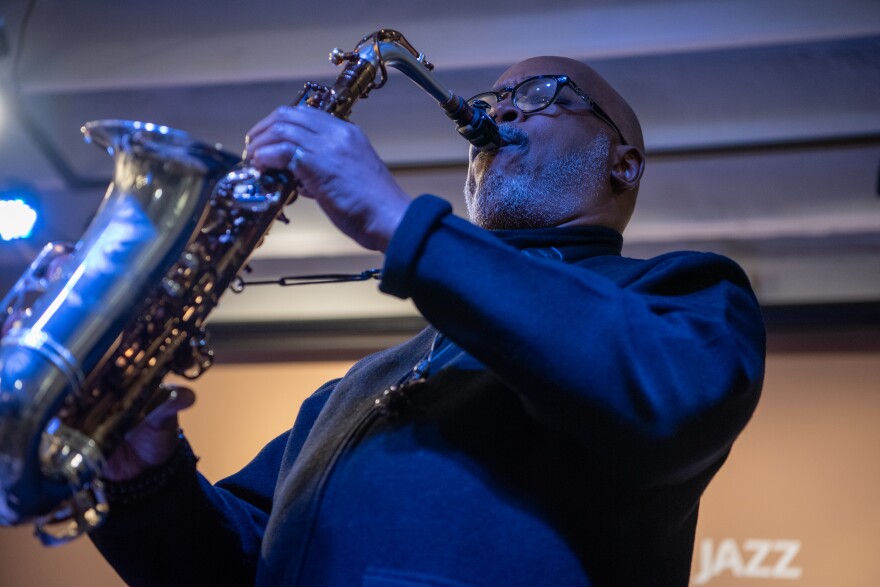
Early in 2022, Sorey invited Osby to join his trio for a five-night run at The Jazz Gallery in New York, playing music openly indebted to the vibe of Banned. With Aaron Diehl on piano and Russell Hall on bass, they brought a revisionary elasticity to standards as well as Osby’s “Please Stand By” and anthems by Ornette Coleman, Thelonious Monk and Hill. A document of the engagement — The Off-Off-Broadway Guide to Synergism, which Pi Recordings put out as a 3-CD set — was one of the year’s most critically hailed jazz releases.
That reception had a lot to do with Sorey’s exalted profile, as a MacArthur Fellow straddling a new-music avant-garde and the latest permutations of modern jazz. It also may have had something to do with the crackling energy of a fantastic live recording, coming out of our long pandemic hiatus. But it resonated most because of Osby, whose aesthetic of rigorous digression defines the set, and who had been conspicuously absent from public life for several years, leaving it to others to speculate about his reasons. Looking back, you could call it the successful test launch that brought him back into working orbit.
Alto saxophonist Greg Osby performing at the IDEA Center For The Arts in Camden, NJ on Oct. 7, 2023.
“I had a beef with a school in Boston where I was teaching, and I had to get legal. I had to let the lawyers do the talking.” This is how Osby broaches the subject of his dismissal from the Berklee College of Music, which followed accusations of sexual misconduct.
Osby had joined the faculty at Berklee in 2008, as a full-time professor in the Ensemble Department. At some point he began dating a woman who’d previously been a student, though she was no longer enrolled. After the relationship ended, she brought her complaint to Berklee administrators, claiming that he had pressured her for sex. Osby resigned in 2012, and at the time he decided not to contest the charges.
This is where the situation might have remained, if not for a story in the Boston Globe on Nov. 8, 2017, during the first wave of coverage around the #MeToo movement. The article, by Kay Lazar, a public health and accountability reporter, bore the attention-grabbing headline ‘Berklee let teachers quietly leave after alleged sex abuse, and pushed students for silence.’ Osby, having granted Lazar an hour-long interview, was damningly cited in the piece.
“Only an idiot would sleep with students, and I am not an idiot,” read the most egregious of his quotes. “I would not do that. But after they graduate, it’s open season.” Another quote implied that the former student wasn’t attractive enough to be a credible accuser. Osby was swiftly renounced on social media. At a moment when entire industries were beginning to reckon with systemic problems — most pointedly, the lack of consequences for sexual harassers and abusers — this was a story that resonated in jazz, and in the broader realm of music education.
One of the most positive repercussions of the movement was the creation in 2018 of the Berklee Institute of Jazz and Gender Justice, with a stated mission “to support and sustain a cultural transformation in jazz, with the commitment to recruit, teach, mentor, and advocate for musicians seeking to study or perform jazz, with gender justice and racial justice as guiding principles.” Carrington is the founder and artistic director of the institute, and has been a dynamic spokesperson for its mission, manifesting an ideal of “jazz without patriarchy.”

Berklee, through its Office of Media Relations, declined to comment on Osby’s departure. But Osby — who says that during his four years on faculty, “I didn’t write one new song, because I was that beat down” — spoke freely about the situation. Regarding his brief relationship with the former student, whose identity has not been disclosed, he says: “For better or for worse, she became obsessed. And I withdrew, which didn’t sit well; the idea that I didn’t return any phone calls or emails really infuriated her. It got to the point where I was almost a victim of being stalked. And the last time that I saw her, she more than inferred that I would pay for it.”
After the Boston Globe story, Osby sought legal action against his accuser for defamation. The case was settled in his favor. “I kept every email, and I kept every text message,” he says. “So that’s how my case was won. Because I had hard evidence. It wasn’t my word.” By contrast, he says Lazar had made no recording of their interview — a crucial factor, in light of the incendiary quotes at the heart of the story.
Osby says he issued a complaint to the Globe, which invited him to submit an open letter. He did, but it never ran. He also sent in a statement to the paper’s “Fresh Start” initiative, which allows individuals to appeal older stories that have had an adverse impact on their lives. Again, the effort led nowhere. Absent a defamation lawsuit against the Globe, which Osby deems a financially ruinous prospect, that’s probably where it stands.
Carrington said she didn’t know enough about the situation to comment. But she has a general point to make about Osby’s character, when it comes to jazz and gender. “I always try to look at the people that were hiring women, like Wayne Shorter,” she says. “And over the years I feel like Greg has supported women players, which is I think something important to recognize.”
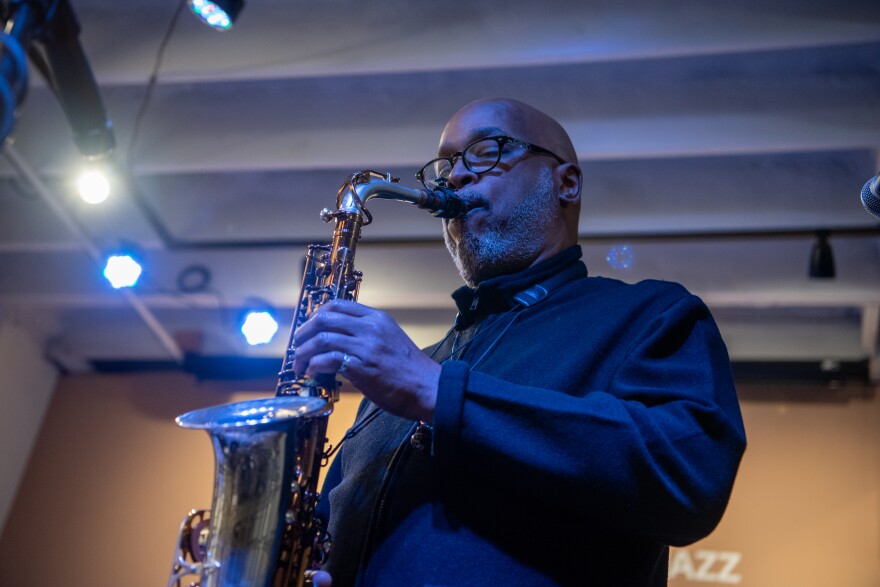
This is a matter of public record: in addition to his own history with Carrington, pianists Geri Allen and Michele Rosewoman and others, Osby has provided a platform for a number of emerging women artists. His independent label, Inner Circle Music, has released the debut albums for more than a few such artists, including saxophonists Melissa Aldana and Lauren Sevian; violinists Tomoko Omura and Lisanne Tremblay; vibraphonist Yuhan Su; pianist JB Jangeun Bae; and singers Sara Serpa, Lara Solnicki, Viktorija Pilatovic and Kavita Shah.
Serpa, who first emerged on the scene as a member of Osby’s band, now helps run Mutual Mentorship for Musicians, which she founded with fellow vocalist Jen Shyu as a platform to support women and nonbinary musicians through mentorship opportunities, commissions, festivals and documentation. (It has published five anthologies of writing by women artists.)
It feels in keeping with tradition that Osby’s new album includes two compositions by young women he once mentored. The closing track, “Neshama,” is a prayerful incantation by Shimrit Shoshan — an Israeli pianist of exceptional promise who was preparing to join Osby’s band when she died in 2012, at 29, of cardiac arrest. Earlier in the track list, there’s a song by Becca Stevens, who had been one of Osby’s composition students at the New School.
Alessandra Diodati furnishes the vocal on Osby’s dreamlike arrangement of the song, which dates all the way back to Stevens’ self-released debut album in 2008. The title is a simple statement with all manner of unspoken connotations: “I Forgive You.”
Minimalism derives its title, and to some extent its style, from a process of self-assessment that Osby attributes to feedback from his sister. An academic with a PhD — but not in music — she listened to 9 Levels and characterized its sound as “bees buzzing around in a hive,” basically an illegible sensory overload. “She said, ‘Perhaps you need to think about how people are receiving this,’” Osby recalls. “I had to ponder on that. I was like, ‘Wow.’ And I thought about this look of bewilderment in the eyes of a lot of people after my shows.”
Earlier in his career, Osby took pride in defying easy comprehension with the complexity of his music: “I always thought, ‘Man, they gotta come and deal with what we’re dealing with. If I explain it, I demystify it, and it’s not slick.’” But he also saw an example in one of his heroes, Cannonball Adderley, who knew how to bring every audience into his confidence.
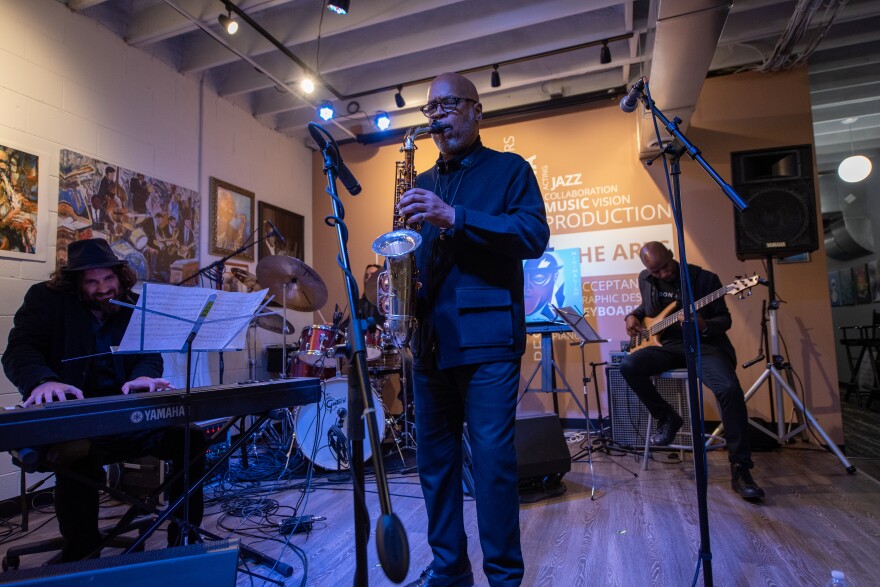
Reevaluating, Osby says, “I had to trim a lot. I had to edit.” Which is not to suggest Minimalism is dumbed-down, or that it has anything to do with the genre by that name. “Dedicato,” which features Osby on soprano saxophone, is his tribute to Wayne Shorter, who also haunts the title track. “Facets Squared,” which Osby and his band played in Camden, follows the angular funk logic that once defined the sound of M-BASE, a vanguardist movement that included Osby, Steve Coleman and Geri Allen. A piece called “Once Known” involves a brooding ostinato in a sinuous 6/4 meter.
And “Youwan” is a plaintive, slow-groove ballad with a personal resonance. “That’s a sentimental dedication to my late granddaughter,” Osby says. “She was 21 when we lost her a year ago in a car accident. She was like the apple of my eye. So she would text me and say ‘youwan take me to…’ the store, or wherever. And I would be at home watching a movie, but I could never say no to her.”
Musically, Osby’s commitment to a younger cohort is evident in the trust he places in Tal Cohen, Nimrod Speaks and others — the same trust that once brought us the likes of Rodney Green and Jason Moran. “He has a great knack for picking amazing younger musicians and grooming them,” Carrington affirms. “People that do that are educators, because they’re interested in the next generation. They’re interested in people going for something different and new.”
As he tiptoes back into active circulation, Osby is thinking a lot about those intentions, and his place in the order of things. “I find that a lot of people in my generation, for lack of a better term, diss a lot of the younger players,” he reflects. “They say, ‘That’s not swinging. There’s no jazz elements. I don’t hear the blues,’ and all that kind of stuff. But you have to allow for evolution.”
He pauses thoughtfully. “And I always try to keep a foot in, and try to be tolerant of these changes — because not for nothing, these young musicians are playing at a level that was inconceivable to me years ago. They’re developing rapidly at a younger age, and at a much faster pace. I marvel at that.”
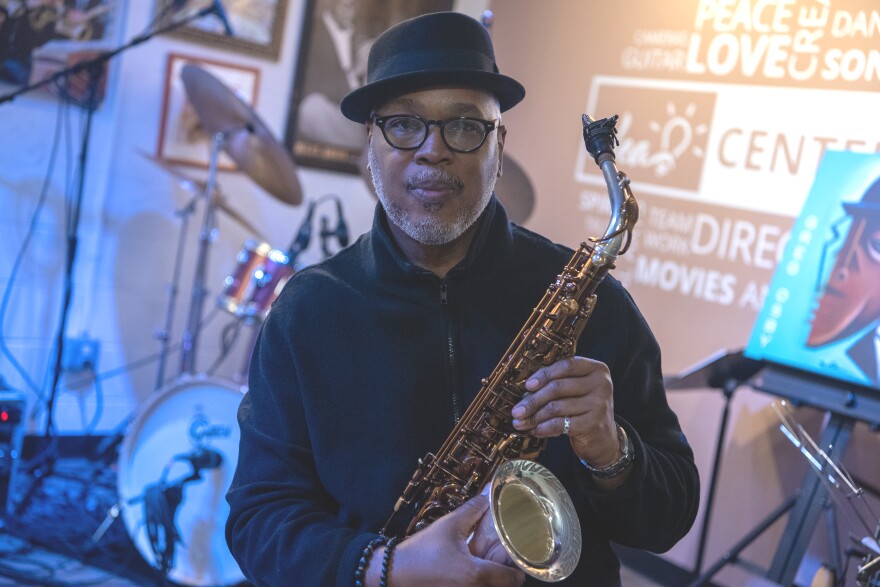

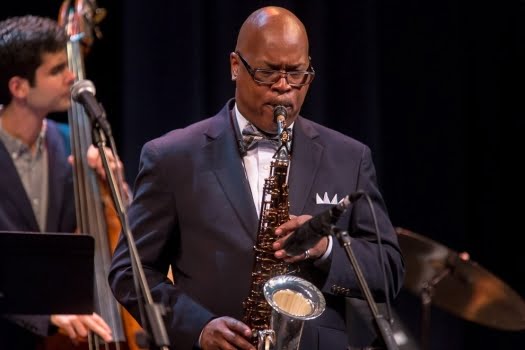





More Stories
CD review: George Benson – Dreams Do Come True: When George Benson Meets Robert Farnon – 2024: Video, CD cover
The band was tight as ever. The Warren Haynes Band cuts loose: Video, Photos
Interview with Alvin Queen: Feeling Good – I heard these tunes played by … Video, new CD cover, Photos